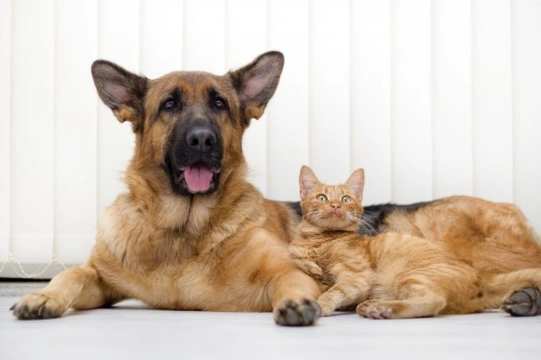
Share:
8 Tips Concerning the Nutritional Management of Renal Dysfunction in Dogs & Cats
- First and foremost, do be guided by your vet. In the event of a recent diagnosis in particular, a prescription diet is very likely to be the most appropriate dietary option. If the food recommended by your vet is being enjoyed and well digested, it is wise to continue with the food for at least a month to help to stabilise your pet’s condition before considering alternatives.
- Some cats and dogs may not fare well with prescription food. It could be that they find it unpalatable, or it could be that a concurrent food allergy or dietary intolerance means that ingredients within a particular renal diet are unsuitable. Should this be the case, there are at least 5 companies who manufacture specific renal diets so there are alternative options to look in to. It’s possible that your pet might prefer a different brand to the one he is currently fed. Some diets may be more digestible to the individual animal than others. Veterinary diets are the most convenient option, and will ensure balanced nutrition appropriate for renal support. Some owners do find them very expensive, but supportive nutrition is a very important part of the treatment protocol for renal disease. Some prescription diets may be covered in part by your pet insurance company, so this is something to look into if cost is an issue.
- Home cooking is an option too but it can be very difficult to get the nutrient balance correct for cats and dogs with normal requirements; let alone pets with renal dysfunction who have very special nutritional considerations. The reason it can be difficult to feed home-prepared food to animals with renal problems is because they require restricted dietary phosphorous (which is naturally present in meat and fish). Matters are further complicated since this mineral must be correctly balanced against the calcium level, and also that of the vitamin A and D. There are some articles that cover home-prepared renal diets online which are written by credible and qualified authors, and it is possible to home-cook for your cat or dog with renal problems, but do ask your vet for guidance in the first instance.
- A regular commercial complete pet food could be an option, but again, it’s crucial you are guided by your vet. Traditionally, a renal diet would be lower in protein to minimise the intake of non-essential amino acids and help to decrease the production of nitrogenous waste products, but advances now indicate that moderate protein levels tend not to be a problem so long as that protein is easily broken down into its constituent amino acids. As mentioned, the phosphorous level is very important, and this should be limited to help to reduce renal mineralisation and renal secondary hyperparathyroidism, and to slow degeneration.
- Failing kidneys cannot regulate sodium intake which is why a low sodium feed is also indicated. Don’t forget that many commercial treats and table scraps are high in salt, so exercise just as much caution with any extras fed to your dog or cat as you do his main diet.
- When comparing nutrient percentages, make sure you are comparing “like for like”. Prescription diets usually show their declarations as “dry matter”, whilst regular feeds show them “as fed” which can make comparison for the average person quite difficult. One also needs to take into account feeding portions, and the calorific value of the food as the amount your pet eats will influence the intake of any nutrient. If in doubt, ask your vet! Some helpful pet food companies may take the time to work our nutrient levels (particularly of phosphorous and sodium) for you based on your cat or dog’s body weight, and you can then take those figures along to your next appointment and ask your vet’s professional opinion as to suitability.
- A proportion of a good quality complete wet food may be a consideration, as it is vitally important to ensure that dogs with renal dysfunction have a suitable fluid intake. With wet foods containing a much higher level of moisture, they are often better for a dog with kidney problems than dry food alone. Dry food can be given, but it may be advisable to soak it before serving. A water fountain designed for pets is often a successful way to help encourage more drinking, and having more than one water bowl around the house and garden is a very good idea too.
- As with all cases of this nature it is always safest to ask your vet’s advice concerning diet for any cat or dog with renal dysfunction since as a lot depends on the degree of the problem, response to medication if given, what is currently fed and its phosphorous level and whether the dog is faring well on the current diet and whether the nutrient balance is optimal in the light of the condition.



